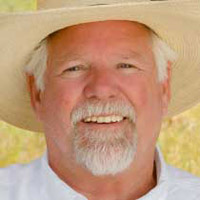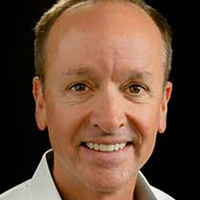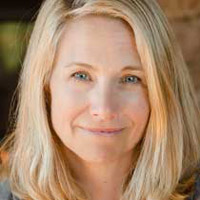The Human Factor in Mergers and Acquisitions

The Human Factor in Mergers and Acquisitions
By Alan Olsen
There are a lot of factors of success and failure in mergers and acquisitions that go into a merger or an acquisition. These business deals come in all shapes and sizes and can be massive or rather small. However, they all involve at least two companies that are either combining or transferring their ownership, operating units or business organizations.
The reasons behind mergers and acquisitions will also vary depending on the circumstances. Sometimes they occur because one company is trying to grow and get bigger. In other instances, a company could be struggling to stay afloat so it decides that being bought or taken over is the best way
y to stave off going under. Still other deals involve two companies of basically the same size doing equally well and both see an advantage in joining forces. Whatever, the reason behind a merger or acquisition, not all of them end up being successful.
Building Business Communities
I recently spoke with Peter Adams, the Founder and CEO of Lighthouse Information Systems Inc., and we discussed some of the important elements of a primary reason for why mergers and acquisitions sometimes fail is due to the. As Peter sees it, the main reason many mergers or why do acquisitions fail sometimes? is because the people behind them fail at making a smooth transition. “Really what matters, I think, is the human factor.
This often gets overlooked in acquisitions and certainly by technologically oriented people.” Peter explained that in reality businesses are really just communities of people. These communities have some kind of guidance and leadership in a certain direction, but it’s not necessarily about the facts and the data and gathering the stacks of documents to mitigate liabilities. Peter said he is much more interested in the human being factor. How many mergers and acquisitions fail.
Communication Is the Key
According to Peter, “the biggest reason for failure is a cultural mismatch and people misalignment.” To do an effective job in an M&A transaction you need to understand first and foremost that you are taking two different cultures and combining them together.” According to Peter, the initial step in this process is to sit down and start talking to people.
The key is to openly discuss ideas and goals, as well as struggles and the overall vision of the companies. He also pointed out that this should take place throughout all levels of the company. Doing this will give you a vision of what needs to be worked on and how you can improve.
Don’t Fall Into the Supremacy Trap
The process of integrating companies presents many challenges, not the least of which is to get everyone on the same page. Peter said that one of the biggest mistakes that acquiring companies make is to have this mindset of supremacy. Often they are bigger and more successful, which leads them to believe that the company being acquired should change everything it does so it becomes more integrated with the acquiring company and its processes.
However, Peter said this is a big mistake. Instead, he said it’s important to evaluate what the company being acquired is doing right and focus on the things that made them attractive in the first place. “Let’s figure out what those kernels are. Let’s preserve those and integrate those into the new whole.” In the end, Peter says that the cultural environment is the key to success factors to consider before merger and acquisition.
Follow our Facebook page for more updates.
—————————————————————————————————————————————————————————————————————
We hope you found this article about “The Human Factor in Mergers and Acquisitions” helpful. If you have questions or need expert tax or family office advice that’s refreshingly objective (we never sell investments), please contact us or visit our Family office page or our website at www.GROCO.com. Unfortunately, we no longer give advice to other tax professionals gratis.
To receive our free newsletter, contact us here.
Subscribe our YouTube Channel for more updates.

Alan Olsen, is the Host of the American Dreams Show and the Managing Partner of GROCO.com. GROCO is a premier family office and tax advisory firm located in the San Francisco Bay area serving clients all over the world.
Alan L. Olsen, CPA, Wikipedia Bio

GROCO.com is a proud sponsor of The American Dreams Show.

The American Dreams show was the brainchild of Alan Olsen, CPA, MBA. It was originally created to fill a specific need; often inexperienced entrepreneurs lacked basic information about raising capital and how to successfully start a business.
Alan sincerely wanted to respond to the many requests from aspiring entrepreneurs asking for the information and introductions they needed. But he had to find a way to help in which his venture capital clients and friends would not mind.
The American Dreams show became the solution, first as a radio show and now with YouTube videos as well. Always respectful of interview guest’s time, he’s able to give access to individuals information and inspiration previously inaccessible to the first-time entrepreneurs who need it most.
They can listen to venture capitalists and successful business people explain first-hand, how they got to where they are, how to start a company, how to overcome challenges, how they see the future evolving, opportunities, work-life balance and so much more..
American Dreams discusses many topics from some of the world’s most successful individuals about their secrets to life’s success. Topics from guest have included:
Creating purpose in life / Building a foundation for their life / Solving problems / Finding fulfillment through philanthropy and service / Becoming self-reliant / Enhancing effective leadership / Balancing family and work…

MyPaths.com (Also sponsored by GROCO) provides free access to content and world-class entrepreneurs, influencers and thought leaders’ personal success stories. To help you find your path in life to true, sustainable success & happiness. It’s mission statement:
In an increasingly complex and difficult world, we hope to help you find your personal path in life and build a strong foundation by learning how others found success and happiness. True and sustainable success and happiness are different for each one of us but possible, often despite significant challenges.
Our mission at MyPaths.com is to provide resources and firsthand accounts of how others found their paths in life, so you can do the same.
LuLaRoe – Disrupting The Retail Market | Mark Stidham
Transcript of LuLaRoe – Disrupting The Retail Market | Mark Stidham: Alan Olsen: Mark Stidham is the CEO of LuLaRoe, a direct to consumer clothing company that he and his wife DeAnne started in 2013. Since it’s inception it has been transforming the fashion. Mark Stidham: I grew up with my Dad being a…
Udacity-Democratizing Education | Sebastian Thrun
About Sebastian Thrun Founder of Udacity Sebastian Thrun is a scientist, educator, inventor, and entrepreneur. He is the founder, chairman, and president of Udacity, whose mission is to democratize education. Udacity focuses on affordable, lifelong learning to give people the needed skills to get a new job or advance their career. Today, the company has…
Why Scientific Wellness will be more Important than Healthcare | Clayton Lewis
About Clayton Lewis A competitive triathlete with a passion for health and wellness, Clayton Lewis loves to win and push the boundaries of what’s possible. In 2013, he partnered with biotech pioneer Dr. Lee Hood to execute Hood’s bold vision to launch a new industry – scientific wellness. That collaboration resulted in the formation…
Up Your Executive Recruiting | Summer Anderson
About Summer Anderson Summer Anderson is the Principal and founder of Human Capital Solutions (HCS). A firm dedicated to executive recruiting with specialization recruiting upper management for growth-oriented companies in the technology industry. Summer has over twenty years of experience in shaping retained executive level recruiting strategies. Prior to founding HCR, she worked at…




